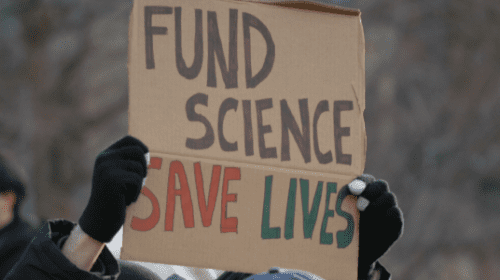Addiction affects all communities, but rural environments present a combination of unique factors and challenges that can exacerbate the issue and make it difficult to address effectively.
Additionally, people living in rural communities may have a more challenging time finding support and resources, but they can still find hope and freedom from addiction.
Addition in Rural Environments
Although overall overdose deaths are higher in urban areas, rates of opioid-related deaths are higher in rural areas than in larger metropolitan areas.1
In recent years, the prescribing of opioids has reduced overall, yet patients in rural areas are still prescribed more opioids than in urban areas.2
Youth in rural areas are particularly disadvantaged. Rural youth have higher alcohol and methamphetamine use than youth in urban environments. And the more rural, the higher the use, as much as twice the rate of urban young adults who use methamphetamines.3
Unique Challenges of Addiction in Rural Areas
Rural communities experience substance use in a very different way than urban areas, and there are various reasons rural communities are more affected by addiction, including fewer resources and education about mental health and less support for those who need it.
Limited access to healthcare and treatment
The primary challenge that rural areas encounter includes limited access to treatment and other in-person medical services due to a scarcity of healthcare providers in these regions.
As a result of limited access, individuals struggling with addiction may face significant barriers to accessing the help they need, which leads to delayed treatment or insufficient care.
Stigma surrounding addiction
Rural communities face disparities in education, information, and understanding about addiction, resulting in a stigma that hinders people from accessing necessary care.
Additionally, in the tight-knit nature of rural communities, people with substance use disorders may be more hesitant to seek treatment for fear of judgment and shame of everyone knowing your business.
When people are less likely to seek support or treatment, it perpetuates the cycle of addiction.
Other factors that contribute to their levels of use:4
- Low education levels
- Poverty
- Lack of employment
- Isolation and hopelessness
Innovative Solutions in Rural Addiction Treatment
Addiction treatment has evolved in recent years. Technological advancements, as well as integrating evidence-based practices and holistic approaches to treatment, have enhanced the effectiveness and improved the reach of addiction treatment options, especially for rural communities.
Telemedicine
Remote healthcare has become a norm for many people, allowing those in remote areas better access to addiction treatment.
People can receive remote consultation, therapy, and medication-assisted treatment from their homes or office. Virtual visits allow people to access a broader network of mental health professionals and addiction specialists, tailoring care to their needs.
Telemedicine is convenient and private, reducing travel time and other expenses. It’s also confidential, as patients can access treatment privately without concerns about stigma or judgment from their friends and family.
Mobile treatment units
For individuals in rural areas, specially equipped vehicles designed to deliver healthcare directly to communities play a crucial role in expanding addiction treatment access to those in rural communities.
These units are equipped with essential medical equipment, diagnostic tools, and treatment supplies, allowing medical professionals to provide on-site care to rural areas.
Initiatives like mobile treatment units support communities and can reach people who live in isolated areas or face other economic challenges. They reduce barriers related to stigma, transportation, and the cost of addiction treatment services.
Community-based organizations and support groups
Many areas have outreach programs that actively support individuals in rural areas and marginalized communities, providing education, awareness, and aid to those who need it.
Peer support groups offer guidance from people who “get it.” Talking with people with similar experiences is vital for a successful recovery. In addition to support and accountability, peers can offer assistance in connecting with treatment resources.
Harm reduction
Rather than emphasizing abstinence alone, harm reduction focuses on reducing the negative consequences associated with drug use. The primary objective of harm reduction is to minimize the harms associated with substance use and promote overall well-being.
Syringe service programs are one example of harm reduction for those who use and inject drugs. These programs supply equipment and other supports like sterile injection equipment, safer smoking kits, condoms, and treatment and mental health referrals.5
However, harm reduction has limitations and challenges:5
- Limits on understanding harm reduction
- Stigma against drug users and supporting agencies
- Inaccurate perceptions of substance abuse and its consequences
- A “prosecutorial mindset” against drug use
Although there is evidence of harm reduction benefits, some smaller communities encounter political resistance and other barriers causing those sick with addiction to suffer longer than necessary.6
Benefits of Rural Environments for Recovery
We know that addiction rates are higher in rural areas for various reasons. But let’s look at the bright side and consider why rural areas might be an excellent place for recovery.
Nature is therapeutic
Nature and open spaces possess therapeutic benefits, promote mental health, and support recovery from various conditions, including addiction.
Rural communities offer more exposure to nature, less noise and congestion, and provide an environment conducive to reducing stress. Additionally, open spaces encourage physical activity that can be highly beneficial for individuals in recovery.
Sense of community and support
Tight-knit rural communities provide opportunities for social interaction and community engagement that might be less common in larger cities. Social support plays a pivotal role in recovery.
Joining local activities, peer support groups, and other social outlets can benefit your mental health and support your addiction recovery.
Education and Awareness in Rural Communities
Raising awareness and educating rural communities about addiction is essential to lessen the stigma and help more people recover.
Addiction education
When providing education on addiction, it’s essential to cover a wide range of aspects, including the science of addiction, risk factors, warning signs, and its impact on physical and mental health. Education also includes providing resources for those who need them.
A tailored approach to addiction education is crucial to enhance the effectiveness and relevance of education initiatives. Educators must consider cultural norms, unique challenges, and rural residents’ values.
More to consider when providing addiction education:
- Involve the community
- Address myths
- Enlist local professionals
- Prioritize youth education
- Utilize technology
- Consider long-term supports
The role of people in creating change
Enacting change in any community requires a desire for change and support to make those changes. Community leaders, healthcare professionals, and advocacy organizations are all people who can effect change in their communities.
Progress on addiction issues in rural areas doesn’t come from within the communities alone. National organizations and programs are pivotal in effecting meaningful changes on a broader scale.
The Rural Communities Opioid Response Program (RCORP) is one initiative that addresses treatment barriers and works toward ending the opioid epidemic. They’ve invested over $500 million since 2018.
Hope and freedom are possible for people struggling with addiction in rural environments. If you or someone you know needs help, get support, seek help, and take action toward recovery.
Finding Hope and Freedom
Addiction is not a choice, and it’s not anyone’s fault. But it is the responsibility of the person struggling to get help and work diligently on their recovery. And many cannot do it alone.
Resources and tips for finding support
There is hope if you or your loved one is struggling with addiction in a rural community. Here are some ideas to get you started:
- Local community clinics
- Your primary care provider
- Teletherapy or online counseling
- Support groups, in-person and online
- Non-profit organizations
- School, university, or workplace services
- Peer support networks
You can also call 211 to connect with local resources, and if it’s an emergency, dial 988 or 1-800-273-8255 for the suicide and crisis hotline.
Recovery Unplugged offers addiction and mental healthcare from wherever you are. Call us today at 1 (855) 975-1757. Our professional staff is available 24 hours a day, every day of the year.
Self-care practices and lifestyle changes
Implementing simple lifestyle changes and focusing on self-care can also benefit your recovery.
Here are some tips:
- Set boundaries and learn to say “no”
- Establish a healthy routine that includes regular sleep patterns
- Stay hydrated to maintain overall well-being
- Move your body regularly by walking or doing yoga
- Seek support from friends, family, or a professional
- Practice mindfulness and focus on the present moment
- Find healthy ways to express and work through your emotions
- Work to identify triggers and develop healthy coping mechanisms
- Explore beneficial stress-reducing techniques
- Spend more time with people you love doing activities you enjoy
- Set realistic goals that align with your recovery journey
- Learn and pursue educational opportunities
If your loved one is struggling with addiction, you can support them by starting a conversation about what they’re going through, sharing resources and what you’ve learned about addiction.

























